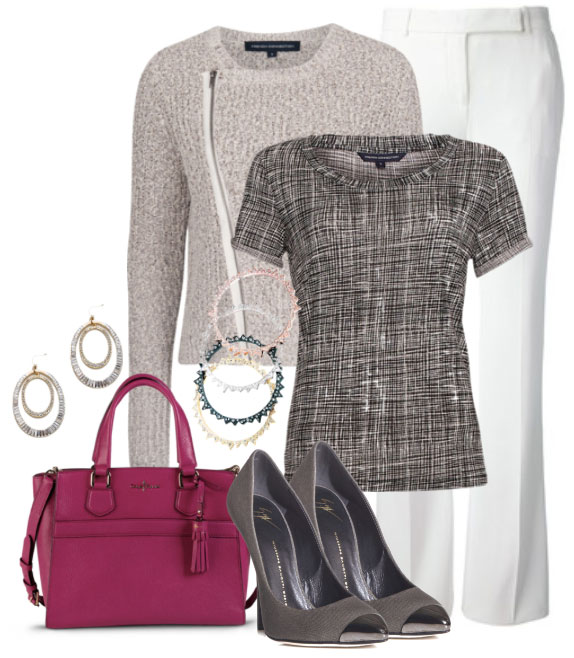Brian Maynor April 2, 2014
April 1, 2014April 2, 2014

‘Designer brands at discount prices’ is one of the most common tag lines inretail today. The term ‘designer’ is used to describe just aboutanything on the market from clothing and accessories to home goods, butin fact is one of many categories in retail and has a very specificmeaning.
Since the goal of marketing is to drive sales, it isoften hard to determine if something is really a designer product orsimply being called ‘designer’ to garner attention. Here is a breakdown of the most popular terms in retail in their hierarchy to help youbetter understand exactly what you are buying:
1. Mass Market. Target and Old Navy are two of the most popular mass-market apparelretailers in the city. This is the lowest end of retail in both priceand quality. Usually limited to casual wear, jeans and t-shirts theseitems are generally under $50, which is a great option for trendy pieces that you only want to last through the season, but you can also findhidden gems. One of my favorite scarves came from Target and I getcomplements on it every time I wear it.
2. Discount. Just like the name, these stores are stocked with items that could have originally been sold at any price point, but are now significantlyreduced. T.J. Maxx, Ross and Marshalls are some of the most populardiscount stores. Oftentimes these items are from previous seasons,overstock or damaged, so while you can find some good deals, you have to be very meticulous and inspect each item carefully. Also because there is no consistency with the inventory these are not stores you can count on to always have what you are looking for. Unless you are a bargainhunter who likes sifting through racks and trying on clothes literallyhunting for deals my recommendation is to avoid the inherent frustration of discount stores entirely.
3. Private Labels. KimRogers; ALFANI; INC; Roundtree & York; Antonio Melani, and Staffordare just a few private label brands that have name recognition and loyal customers. These are brands that are owned by the retailers, generally department stores, and are only produced for those stores. Often major profit centers because they can be heavily discounted and stillprofitable; these lines offer trendy, stylish options for a fraction ofthe cost of similar ‘name brand’ products.
4. Moderate Brands. GAP; Banana Republic; Land’s End, and Nine West are all national brands that offer moderate lines. The quality and price point of these productsare higher than the mass-market retailers, but they are still considered ‘affordable fashion’ and can vary in price from $50 to $500.
5. Secondary Lines. Also called diffusion lines, these are typically less expensive, morecontemporary lines from designer labels. MARC by Marc Jacobs; DKNY byDonna Karen, LOFT by Ann Taylor and Simply Vera by Vera Wang are just afew. These are also called bridge lines because the hope is thatcustomers will be introduced to the designer through this label andbecome customers of the true designer collection. Thanks to mass-market retailers like Target and H&M we are also seeing a lot of diffusion lines in the form of capsule collections like Jason Wu and IsaacMizrahi for Target and Lanvin, Versace and Marni for H&M.
6. Designer. The term that started it all. True designer labels, or ‘name brands’have very high standards of quality, design and construction. Thecollections are considered ready-to-wear but they are often limitedproductions and retail for over $1,000 per item. Prada; Gucci;Burberry; Chanel; Valentino and Tom Ford are just a few true designerbrands.
7. Haute Couture. The crown jewel offashion. This label is reserved for a small group of customers who canafford custom, made-to-measure clothing that often exceeds tens ofthousands dollars. This term, like designer, has been misused andmanipulated over the years to encompass far more than its originaldefinition. Technically speaking this French technique is carefullyregulated and controlled by law, but is often applied to anyhigh-fashion, custom-fit clothing.
This hierarchy is not ajudgment or snobby look at fashion, where mass-market is bad and onlydesigner matters. Most of us have a closet that mixes all of theselevels. It is, however, useful to understanding the fashion industryand to decide for yourself if an item is really a good deal or worth the cost.
Click here or on the images below to learn more about the outfit.

I am always curious to hear from you and what you see in the workplace. Send your questions, comments and pet peeves to [email protected]. Also find each of these storyboards athttp://brianmaynor.polyvore.com with links to purchase each item.
About Brian Maynor
Brian Maynor has built a reputation as one of the leading style coaches inthe Southeast and is quickly expanding his eponymous company, BRIANMAYNOR and his FIND, FLATTER & FLAUNT line of image consultingservices. A professional with a fresh, upbeat and down-to-earthpersonality and boundless creative energy, he works frequently with with local celebrities; Fortune 500 companies and nonprofit organizations;modeling agencies; fashion designers; production companies; recordlabels; media and individuals. A regular contributor to various fashionblogs and online communities, Brian Maynor is one of the most trustedand recognized style experts in the region, utilizing his education andtraining as a broadcast journalist to serve as a style lecturer, emcee,and commentator for over a decade. He has appeared at fashion shows,expos, and charity fundraisers, as well as events with big brands likeBanana Republic, Ann Taylor, Chico’s and Macy’s. His approach isinnovative, creative and fashion-forward, balancing fresh, modern styles with classic pieces to keep one’s look grounded. To learn more, visit http://www.brianmaynor.com.














